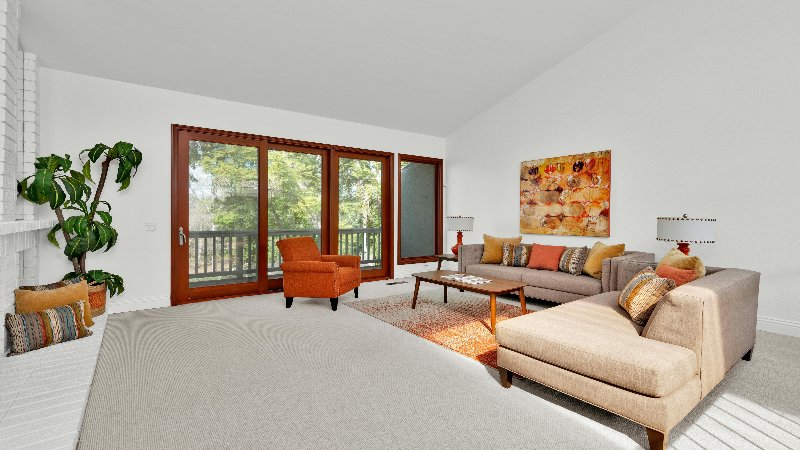Selecting the right windows for your home is more than a cosmetic choice—it directly affects comfort, energy efficiency, and overall value. Whether you’re building new or renovating, understanding what makes a window the best fit for your specific needs is vital. With so many frame materials, glazing options, and operating styles available, the process can feel overwhelming.
By considering your home’s design, climate, and maintenance needs, choosing the right windows for your home becomes much simpler. Quality windows boost curb appeal, lower energy costs, and improve comfort. Homeowners seeking replacement windows Tulsa, OK, can find many high-quality options that balance style and performance.
By reviewing your priorities and learning about the latest in window technology, you can confidently select the right windows for your home. Let’s explore the major factors—style, materials, efficiency, and installation—that go into making the perfect choice.
Choose Windows That Match Your Home’s Architectural Style
The windows you choose should harmonize with your home’s architecture to create a unified, pleasing look. Classic homes, such as Colonials or Craftsman, typically call for double-hung windows or those with muntins that mimic historic sash designs.
In contrast, contemporary homes pair beautifully with large, fixed-pane picture windows or sliders that emphasize openness, clean lines, and natural light. Matching your window style to your home’s character maintains its design integrity and can increase resale value.
Consider curb appeal alongside indoor-outdoor flow—windows must complement rooflines, siding, and other exterior features. Consulting with an architect or experienced window provider can clarify which options best suit your house style.
Prioritizing Energy Efficiency
Modern windows play a critical role in your home’s insulation envelope. Choosing energy-efficient windows can significantly curb heating and cooling expenses by reducing drafts and heat loss. The most effective windows feature technologies such as double- or triple-glazing, which create thermal barriers.
Look for models with low-E (low-emissivity) coatings that reflect heat into your home during the winter and block solar gain during the summer.
Windows filled with inert gases such as argon or krypton between panes provide superior insulation compared to air-filled models.
Understanding Different Home Window Styles
- Double-Hung Windows: Feature two operable sashes that open and close vertically, allowing for adjustable airflow and easy cleaning.
- Casement Windows: Side-hinged and open outward using a crank, offering maximum ventilation and a clear view.
- Sliding Windows: Sashes slide horizontally, perfect for rooms with limited vertical space but enough width to accommodate side-to-side movement.
- Picture Windows: Large, fixed panes that let in ample natural light and frame outdoor views, without operable sashes for ventilation.
- Bay and Bow Windows: Project outward from the home, forming a cozy nook while expanding your view and admitting daylight.
You can explore this resource from This Old House for a more detailed guide on the various types of windows and their features. Choosing the right window style can enhance both your home’s aesthetic appeal and energy efficiency.
Evaluating Frame Materials
The frame composition of a window affects its appearance, strength, upkeep requirements, and insulating ability.
Here are the most popular choices:
- Vinyl: Popular for affordability and low maintenance, but can warp under extreme temperatures and may have fewer color options.
- Wood: Offers superior insulation and timeless appeal but requires regular sealing or painting to prevent rot and weathering.
- Aluminum: Lightweight and strong with slim profiles, but conducts heat easily—less ideal in extreme climates unless thermally broken.
- Fiberglass: Combines strength with energy efficiency and resists distortion; generally higher upfront cost but pays off in durability.
Weigh your maintenance tolerance, climate-related needs, and budget to determine the right frame material for your home.
Considering Glass Options and Technologies
Advanced glass options can further boost your windows’ energy efficiency and safety. Key technologies include:
- Low-E Coatings: Minimize heat transfer, keeping interiors more comfortable year-round without sacrificing sunlight.
- Gas Fills: Layers of argon or krypton gas between glass panes enhance insulation by reducing heat conduction.
- Tempered Glass: Treated for strength and safety, breaks into less dangerous, rounded fragments if shattered.
Innovations like impact-resistant glass can also be crucial in regions prone to severe storms or break-ins. Balancing these features leads to optimal home comfort, safety, and energy savings.
Proper Window Installation and Maintenance Tips
Even if you purchase the right windows for your home, proper installation is essential for performance. Incorrect installation leads to air leaks, drafts, water infiltration, and reduced energy efficiency.
Hire qualified installers and follow up with annual maintenance, such as lubricating hardware and inspecting seals. Ongoing care helps preserve the performance and lifespan of the windows you worked hard to choose.
Final Thoughts
Selecting the right windows for your home requires thoughtful planning, but the long-term benefits are well worth it. By considering design, efficiency, materials, and installation quality, you’ll enjoy windows that enhance comfort, curb appeal, and overall home value.
Putting in the effort now ensures that the right windows for your home will deliver beauty, durability, and energy savings for years to come.
See Also: Transform Your Space with Stylish and Durable Brick Slips
